Fast Growing Spinach Indoors – imagine harvesting fresh, vibrant spinach right from your kitchen, even when the snow is falling outside! Forget those limp, pre-packaged greens from the grocery store. This isn’t just a dream; it’s an achievable reality with a few simple tricks and a little DIY spirit. For centuries, cultivating food close to home has been a cornerstone of self-sufficiency and a connection to nature. From ancient Roman rooftop gardens to the victory gardens of wartime, growing your own food has always been a way to ensure access to fresh, healthy produce.
But let’s face it, not everyone has a sprawling backyard or the perfect climate for outdoor gardening. That’s where the magic of indoor gardening comes in! And that’s why I’m so excited to share my favorite DIY hacks for fast growing spinach indoors. We’ll bypass the common pitfalls and get you on the path to a bountiful harvest in no time.
Why spinach, you ask? Well, besides being incredibly nutritious and delicious, spinach is surprisingly easy to grow indoors with the right techniques. This DIY guide will empower you to create the ideal environment for your spinach to thrive, from selecting the right containers and soil to mastering the art of watering and lighting. Say goodbye to expensive, wilted spinach and hello to a constant supply of fresh, homegrown goodness!
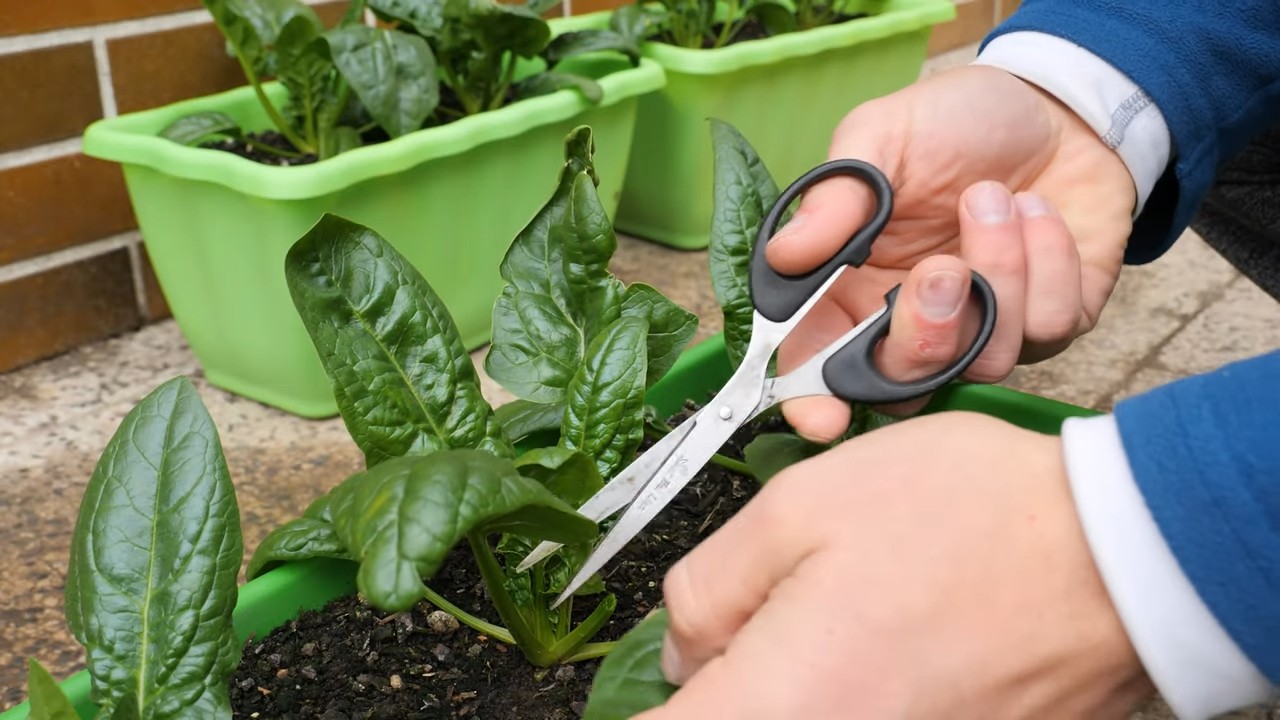
Growing Spinach Indoors: A DIY Guide to a Bountiful Harvest
Okay, spinach lovers, let’s get down to business! I’m going to walk you through everything you need to know to grow delicious, fast-growing spinach right inside your home. Forget those sad, wilted bags from the grocery store – fresh, homegrown spinach is just weeks away!
Choosing the Right Spinach Variety
First things first, not all spinach is created equal, especially when growing indoors. We need varieties that are quick to mature and do well in containers. Here are a few of my favorites:
* Baby’s Leaf Hybrid: This one is a classic for a reason. It’s super fast-growing, producing tender leaves in as little as 30 days. Plus, it’s bolt-resistant, meaning it won’t go to seed quickly when temperatures fluctuate.
* Space: Another excellent choice for indoor growing. “Space” spinach is known for its smooth leaves and resistance to common spinach diseases. It also tolerates slightly warmer temperatures better than some other varieties.
* Tyee: If you’re looking for something a bit more robust, “Tyee” is a great option. It has thicker leaves and a slightly stronger flavor. It’s also relatively quick to mature.
* Winter Bloomsdale: This heirloom variety is known for its crinkled leaves and cold hardiness, making it a good choice if your indoor growing space tends to be a bit cooler.
Gathering Your Supplies
Before we start planting, let’s make sure we have everything we need. This will save you time and frustration later on.
* Containers: You’ll need containers that are at least 6 inches deep. I prefer using rectangular planters, as they maximize space and allow you to grow more spinach in a smaller area. Make sure your containers have drainage holes!
* Potting Mix: Don’t use garden soil! It’s too heavy and compacts easily, which can suffocate the roots. Instead, opt for a high-quality potting mix that’s specifically formulated for containers. I like to use a mix that contains peat moss, perlite, and vermiculite for good drainage and aeration.
* Spinach Seeds: Of course, you’ll need spinach seeds! Choose one of the varieties I mentioned earlier.
* Grow Lights: Spinach needs plenty of light to thrive. If you don’t have a sunny windowsill that gets at least 6 hours of direct sunlight per day, you’ll need to invest in grow lights. LED grow lights are energy-efficient and work great for indoor gardening.
* Watering Can or Spray Bottle: You’ll need a way to water your spinach plants gently.
* Optional: Liquid Fertilizer: While not essential, a liquid fertilizer can help boost growth and yields. Choose a balanced fertilizer that’s specifically formulated for leafy greens.
* Optional: Seed Starting Tray: If you prefer to start your seeds indoors before transplanting them to larger containers, you’ll need a seed starting tray and a humidity dome.
Planting Your Spinach Seeds
Now for the fun part! Let’s get those seeds in the ground.
1. Prepare Your Containers: Fill your containers with potting mix, leaving about an inch of space at the top. Gently pat down the soil to create a level surface.
2. Sow the Seeds: Sprinkle the spinach seeds evenly over the surface of the soil. You can sow them quite densely, as you’ll be thinning them out later. Aim for about 1/2 inch spacing between seeds.
3. Cover the Seeds: Cover the seeds with a thin layer of potting mix, about 1/4 inch deep.
4. Water Gently: Use a watering can or spray bottle to gently water the soil. Be careful not to dislodge the seeds. The soil should be moist but not soggy.
5. Provide Light and Warmth: Place your containers in a sunny windowsill or under grow lights. If using grow lights, position them a few inches above the soil surface. Spinach seeds germinate best at temperatures between 60-70°F (15-21°C).
6. Keep the Soil Moist: Keep the soil consistently moist until the seeds germinate. This usually takes about 5-10 days. You can cover the containers with plastic wrap or a humidity dome to help retain moisture.
Caring for Your Spinach Plants
Once your spinach seeds have germinated, it’s time to start caring for your seedlings.
1. Thin the Seedlings: Once the seedlings have developed their first true leaves (the leaves that appear after the initial seed leaves), it’s time to thin them out. This will give the remaining plants enough space to grow. Use scissors to snip off the weaker seedlings at the soil line, leaving about 2-3 inches between plants.
2. Water Regularly: Spinach needs consistent moisture to thrive. Water your plants whenever the top inch of soil feels dry to the touch. Be sure to water deeply, so that the water reaches the roots. Avoid overwatering, as this can lead to root rot.
3. Provide Adequate Light: Spinach needs at least 6 hours of direct sunlight per day. If you’re using grow lights, keep them on for 12-14 hours per day.
4. Fertilize (Optional): If you want to boost growth and yields, you can fertilize your spinach plants every 2-3 weeks with a liquid fertilizer. Follow the instructions on the fertilizer label.
5. Monitor for Pests and Diseases: Keep an eye out for pests and diseases. Aphids and spider mites are common pests that can attack spinach plants. If you notice any pests, you can try spraying them with insecticidal soap or neem oil. Downy mildew is a common fungal disease that can affect spinach. To prevent downy mildew, make sure your plants have good air circulation and avoid overwatering.
Harvesting Your Spinach
The best part! You can start harvesting your spinach leaves as soon as they’re big enough to eat, usually about 4-6 weeks after planting.
1. Harvest Outer Leaves: To harvest, simply snip off the outer leaves with scissors, leaving the inner leaves to continue growing. This is known as “cut and come again” harvesting, and it allows you to harvest spinach from the same plants for several weeks.
2. Harvest Entire Plant: Alternatively, you can harvest the entire plant at once by cutting it off at the base.
3. Wash and Enjoy: Wash your spinach leaves thoroughly before eating. You can use them in salads, smoothies, soups, or any other dish that calls for spinach.
Troubleshooting Common Problems
Even with the best care, you might encounter some problems when growing spinach indoors. Here are a few common issues and how to fix them:
* Yellowing Leaves: Yellowing leaves can be a sign of several problems, including overwatering, underwatering, nutrient deficiencies, or pests. Check the soil moisture and adjust your watering accordingly. If the soil is dry, water deeply. If the soil is soggy, allow it to dry out before watering again. If you suspect a nutrient deficiency, try fertilizing your plants with a balanced fertilizer.
* Leggy Growth: Leggy growth (tall, spindly plants with few leaves) is usually a sign of insufficient light. Make sure your plants are getting enough sunlight or grow light.
* Bolting: Bolting (when the plant starts to produce flowers and seeds) is usually caused by high temperatures or stress. To prevent bolting, try to keep your growing space cool and provide consistent moisture. Choose bolt-resistant varieties.
* Pests: As mentioned earlier, aphids and spider mites are common pests that can attack spinach plants. Spray them with insecticidal soap or neem oil.
Extending Your Harvest
Want to keep the spinach coming? Here are a few tips for extending your harvest:
* Succession Planting: Sow new seeds every 2-3 weeks to ensure a continuous supply of spinach.
* Cool Temperatures: Spinach grows best in cool temperatures. If your indoor growing space gets too warm, try moving your plants to a cooler location or using a fan to improve air circulation.
* Bolt-Resistant Varieties: Choose bolt-resistant varieties to help prevent premature bolting.
Enjoy Your Homegrown Spinach!
Growing spinach indoors is a rewarding experience. With a little bit of care and attention, you can enjoy fresh, delicious spinach all year round. So, get planting and enjoy the fruits (or rather, the leaves!) of your labor! I hope this guide helps you achieve a bountiful spinach harvest. Happy gardening!
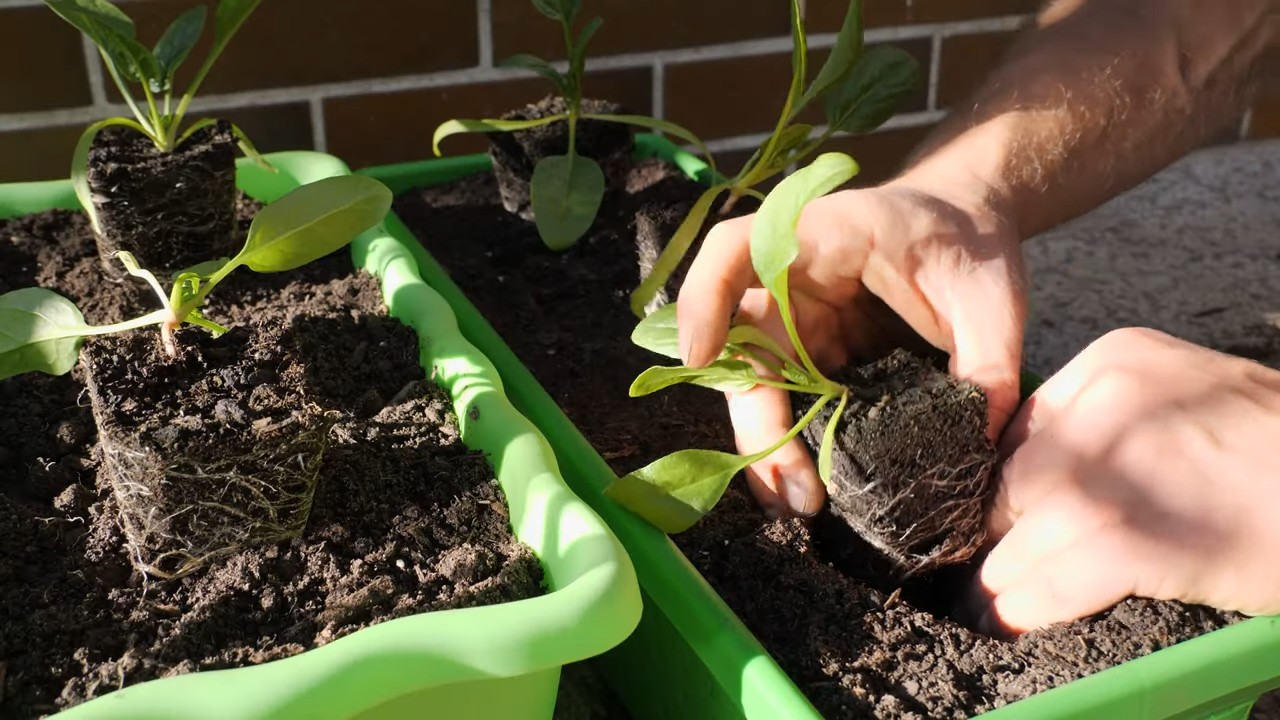
Conclusion
So, there you have it! Mastering the art of growing fast-growing spinach indoors is not only achievable but also incredibly rewarding. We’ve walked you through the essential steps, from selecting the right spinach varieties and providing optimal lighting to ensuring proper watering and nutrient management. But why should you embark on this indoor gardening adventure?
Firstly, the convenience is unparalleled. Imagine having fresh, crisp spinach readily available at your fingertips, regardless of the season or weather conditions outside. No more last-minute grocery store runs or settling for wilted, pre-packaged greens. You’ll have a constant supply of nutrient-rich spinach to add to your salads, smoothies, omelets, and countless other dishes.
Secondly, growing your own spinach allows you to control the entire process, ensuring that your greens are free from harmful pesticides and herbicides. You can rest assured knowing that you’re feeding yourself and your family the healthiest, most natural spinach possible. This is especially important for those who are health-conscious or have dietary restrictions.
Thirdly, it’s a fantastic way to connect with nature and experience the satisfaction of nurturing something from seed to harvest. There’s something truly magical about watching those tiny seeds sprout and transform into vibrant, leafy greens. It’s a therapeutic and fulfilling activity that can bring joy and relaxation to your daily life.
But the possibilities don’t end there! Feel free to experiment with different spinach varieties to discover your personal favorites. Try adding companion plants like basil or chamomile to your indoor garden to enhance the flavor and aroma of your spinach. You can also explore different growing mediums, such as hydroponics or aquaponics, for a more advanced and sustainable approach.
Don’t be afraid to get creative and personalize your indoor spinach garden to suit your own preferences and needs.
We encourage you to take the plunge and give this DIY trick a try. It’s easier than you might think, and the rewards are well worth the effort. Start small, learn as you go, and don’t be discouraged by any initial setbacks. Gardening is a journey, and every mistake is an opportunity to learn and grow.
Once you’ve harvested your first batch of homegrown spinach, we’d love to hear about your experience! Share your tips, tricks, and photos with us in the comments section below. Let’s create a community of indoor spinach growers and inspire others to embrace the joys of homegrown goodness.
Remember, growing fast-growing spinach indoors is not just about having fresh greens; it’s about connecting with nature, nourishing your body, and experiencing the satisfaction of creating something beautiful and delicious with your own hands. So, grab your seeds, potting mix, and grow lights, and let’s get started! Happy gardening!
Frequently Asked Questions (FAQ)
What are the best spinach varieties for growing indoors?
Several spinach varieties thrive indoors. ‘Baby’s Leaf Hybrid’ is a popular choice due to its fast growth and tender leaves. ‘Space’ spinach is another excellent option, known for its disease resistance and adaptability to indoor conditions. ‘Tyee’ is a bolt-resistant variety, meaning it’s less likely to flower prematurely, which can make the leaves bitter. ‘Winter Bloomsdale’ is a classic heirloom variety that performs well in cooler temperatures, making it suitable for indoor growing during the winter months. Experiment with a few different varieties to see which ones perform best in your specific indoor environment. Consider factors like available space, lighting conditions, and personal taste preferences when making your selection.
How much light does indoor spinach need?
Spinach requires a significant amount of light to grow properly indoors. Aim for at least 12-14 hours of light per day. Natural sunlight is ideal, but if you don’t have a sunny window, you’ll need to supplement with artificial grow lights. LED grow lights are a great option because they are energy-efficient and provide the full spectrum of light that spinach needs. Fluorescent grow lights can also be used, but they may not be as effective as LEDs. Position the grow lights a few inches above the spinach plants and adjust the height as the plants grow. Monitor the plants closely for signs of insufficient light, such as leggy growth or pale leaves.
What type of soil is best for growing spinach indoors?
Spinach prefers well-draining soil that is rich in organic matter. A good potting mix for indoor spinach should contain a blend of peat moss, perlite, and vermiculite. You can also add compost or other organic amendments to improve the soil’s fertility and drainage. Avoid using garden soil, as it can be too heavy and may contain pests or diseases. The ideal pH for spinach is between 6.5 and 7.0. You can test the pH of your soil using a soil testing kit and adjust it accordingly. Ensure the container you use has drainage holes to prevent waterlogging, which can lead to root rot.
How often should I water my indoor spinach plants?
Water your spinach plants regularly, keeping the soil consistently moist but not waterlogged. Check the soil moisture level daily by sticking your finger into the soil. If the top inch of soil feels dry, it’s time to water. Water deeply, allowing the excess water to drain out of the drainage holes. Avoid overhead watering, as this can promote fungal diseases. Instead, water at the base of the plants. The frequency of watering will depend on factors such as the temperature, humidity, and type of potting mix you’re using. During warmer months, you may need to water more frequently.
How often should I fertilize my indoor spinach plants?
Spinach is a heavy feeder and benefits from regular fertilization. Start fertilizing your spinach plants about two weeks after they germinate. Use a balanced liquid fertilizer, such as a 10-10-10 or 20-20-20, diluted to half strength. Fertilize every two to three weeks, following the instructions on the fertilizer label. You can also use organic fertilizers, such as compost tea or fish emulsion. Avoid over-fertilizing, as this can lead to excessive leaf growth and reduced flavor. Monitor the plants closely for signs of nutrient deficiencies, such as yellowing leaves or stunted growth.
How long does it take for spinach to grow indoors?
Spinach is a relatively fast-growing crop, and you can typically harvest your first leaves within 30-45 days of planting. The exact time will depend on the variety of spinach you’re growing, the growing conditions, and your harvesting method. You can harvest spinach leaves as soon as they are large enough to eat. Simply snip off the outer leaves, leaving the inner leaves to continue growing. This cut-and-come-again harvesting method allows you to enjoy a continuous supply of fresh spinach for several weeks.
What are some common problems when growing spinach indoors and how can I fix them?
Some common problems when growing spinach indoors include aphids, spider mites, and fungal diseases. Aphids and spider mites can be controlled with insecticidal soap or neem oil. Fungal diseases can be prevented by ensuring good air circulation and avoiding overhead watering. If you notice any signs of disease, remove the affected leaves immediately. Another common problem is bolting, which is when the spinach plant flowers prematurely. This can be caused by high temperatures or long days. To prevent bolting, choose bolt-resistant varieties and provide shade during the hottest part of the day.
Can I grow spinach indoors year-round?
Yes, you can grow spinach indoors year-round, provided you have the right growing conditions. The most important factors are adequate light, proper watering, and consistent temperatures. During the winter months, you may need to supplement with artificial grow lights to provide enough light for the plants. You may also need to adjust your watering schedule depending on the humidity levels in your home. With a little care and attention, you can enjoy fresh, homegrown spinach all year long.

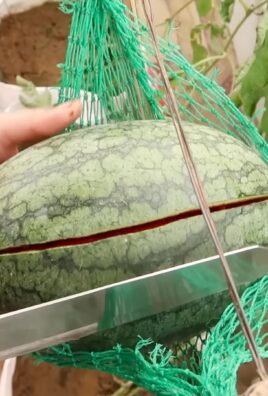
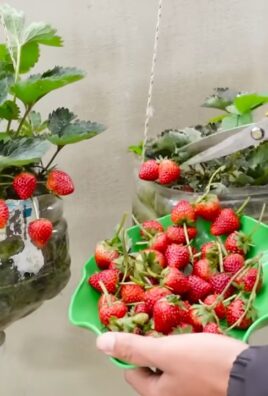
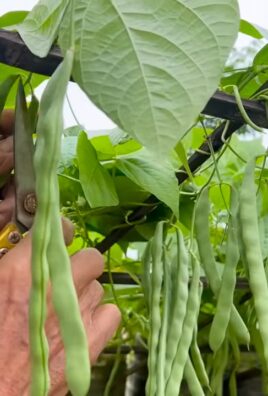
Leave a Comment